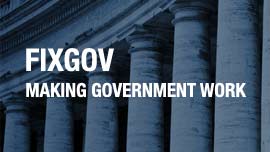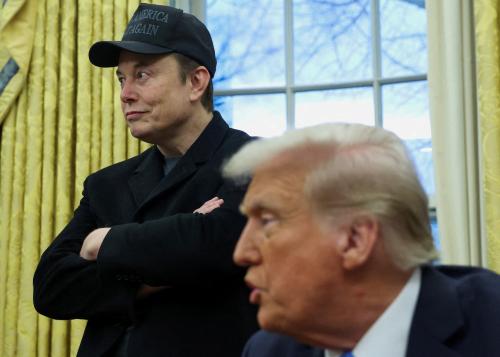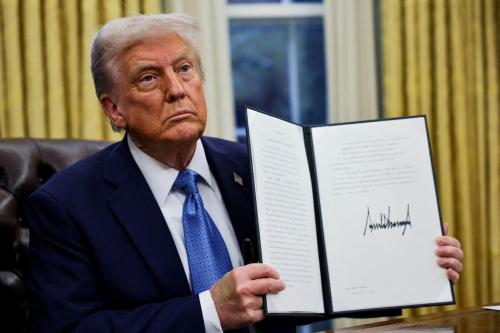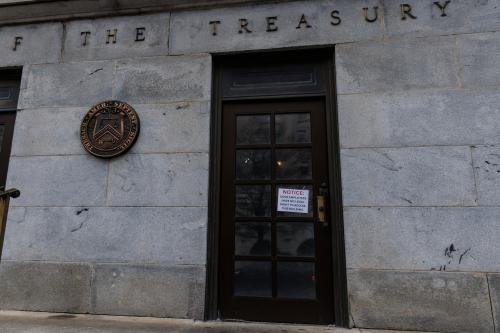During the 2024 presidential campaign, then-candidate Donald Trump threatened to fire senior military officers who executed President Biden’s controversial withdrawal from Afghanistan as well as those involved with “woke” programs in the military or connected with former Joint Chiefs of Staff Chairman Mark Milley, whom Trump has accused of committing treason. Now that Pete Hegseth has been confirmed as Secretary of Defense, we will find out how far President Trump intends to push this agenda.
Since reentering the Oval Office, Trump has acted on an expansive view of executive power, so there is good reason to take his threats against military officers seriously. But there’s a threshold question: does he have the legal or constitutional authority to carry out these threats?
Specific issues
There is a tension built into the governance of the U.S. military. On the one hand, Article II, Section 2 of the Constitution says that the president shall be “Commander in Chief” of the military. Less well known is Section 8 of Article I, which stipulates that Congress has the power to “make rules for the government and regulation” of the armed forces.
Let’s begin with a clear case of each power. No one doubts that the president has the power to relieve officers of their command and to reassign and replace them as he sees fit. President Lincoln did so repeatedly during the Civil War, and Harry Truman famously sacked General Douglas MacArthur as commander of U.S. forces in South Korea during the Korean War, an act backed by Congress after a thorough inquiry.
On the other hand, when Congress enacted the Uniform Code of Military Justice in 1950, the foundation of the Armed Forces’ legal system, no one questioned its constitutional authority to do so under Article I, Section 8.
What bearing does this division of constitutional authority over the military between the executive and legislative branches have on the issue of dismissing officers from the military?
After the Civil War, Congress passed a law stating that “No commissioned officer may be dismissed from any armed force except (1) by sentence of a general court-martial; (2) in commutation of a general court-martial; or (3) in time of war, by order of the President.” This language remains in the current statute today.
If President Trump wants to fire generals on his own authority, he would be required to show that the U.S. is currently at war. Are we? As (retired) Major General Charles Dunlap, the former deputy judge advocate of the U. S Air Force, points out, there is no universally accepted definition under U.S. law of when the country is at war. Some statutes do use the phrase “time of war declared by Congress,” while others do not.
If the president asserts, and a fired general denies, that the United States is at war, this issue may well be litigated all the way to the Supreme Court, which would face the uncomfortable but unavoidable task of drawing the legal line between war and peacetime, at least for purposes of that statute.
Could a retired military officer be recalled to active duty without his consent to face a court-martial? Probably not.1 Existing statute—which is based on Congress’ constitutional power to “raise and support Armies”—allows service secretaries to recall retirees in limited circumstances, such as acute manpower shortages in specific specialties. If President Trump is serious about trying General Milley for treason, he will be forced to do so in a civilian court, not a court-martial, and he would be highly unlikely to win a guilty verdict.
What about the top generals connected to the withdrawal from Afghanistan? The president could take steps short of outright dismissal that would create strong incentives for them to retire. As Dunlap points out, a little-known provision of law links the grades of three- and four-star generals assigned to specific positions designated as being of special “importance and responsibility.” If the president terminates an assignment and the general refuses to retire voluntarily, they will revert to a lower permanent grade, which would mean significant cuts in both active-duty pay and retirement income. In most circumstances, the prospect of financial loss would enable the president to achieve his objective of removing the targeted individual from the armed forces. But if the general were determined to resist nonetheless, it is not clear that the president could simply dismiss him.
General considerations
Our familiarity with the president’s role as commander-in-chief leads us to believe that he exercises full authority over all aspects of military affairs. But as University of Virginia law Professor Saikrishna Pakash argues with a wealth of historical detail, this is not now the case and never has been. From the Revolutionary War to the present day, the commander-in-chief’s powers have been limited by law,2 and the constitutional authority of Congress over the military has defined the zone within which the president exercises his military leadership.
As Zachary Price has painstakingly shown, Congress’ authority over military offices is extensive, and the Supreme Court usually has backed Congress when it exercises this authority. As the Court declared in Chappell v. Wallace (1983), “the Constitution contemplated that the Legislative Branch have plenary control over rights, duties, and responsibilities in the framework of the Military Establishment.” And in Loving v. U.S. (1996), the Court stated flatly that “[W]e give Congress the highest deference in ordering military affairs.”
However broad the president’s authority over the military may be, the Constitution makes it clear that it is not absolute. President Trump does not have unchecked power to pursue vendettas against officers who have challenged his policies or have implemented policies he dislikes. As the oath they swear makes clear, military officers have the obligation to obey the lawful orders of the commander in chief, but their highest loyalty is to the Constitution, not to the temporary head of the executive branch.
-
Footnotes
- In U.S. ex rel. Toth v. Quarles (1955), the Supreme Court held that Congress did not have the power to “subject civilian former service members to trial by court martial for crimes [allegedly] committed when they were on active duty.” See David F. Forte and Mackubin Owens, Military Regulations, fn. 26. For a solid constitutional argument that the president also lacks this power, see Saikrishna Bangalore Prakash, “Deciphering the Commander-in-Chief Clause,” The Yale Law Journal 133:1 (2023), p. 72.
- In specific cases, however, presidents have been able to exercise authority in a gray zone between executive and congressional power, with the blessing of the judiciary. I owe this observation to Scott Anderson.
The Brookings Institution is committed to quality, independence, and impact.
We are supported by a diverse array of funders. In line with our values and policies, each Brookings publication represents the sole views of its author(s).








Commentary
Does the president have the power to fire or punish military officers?
February 21, 2025